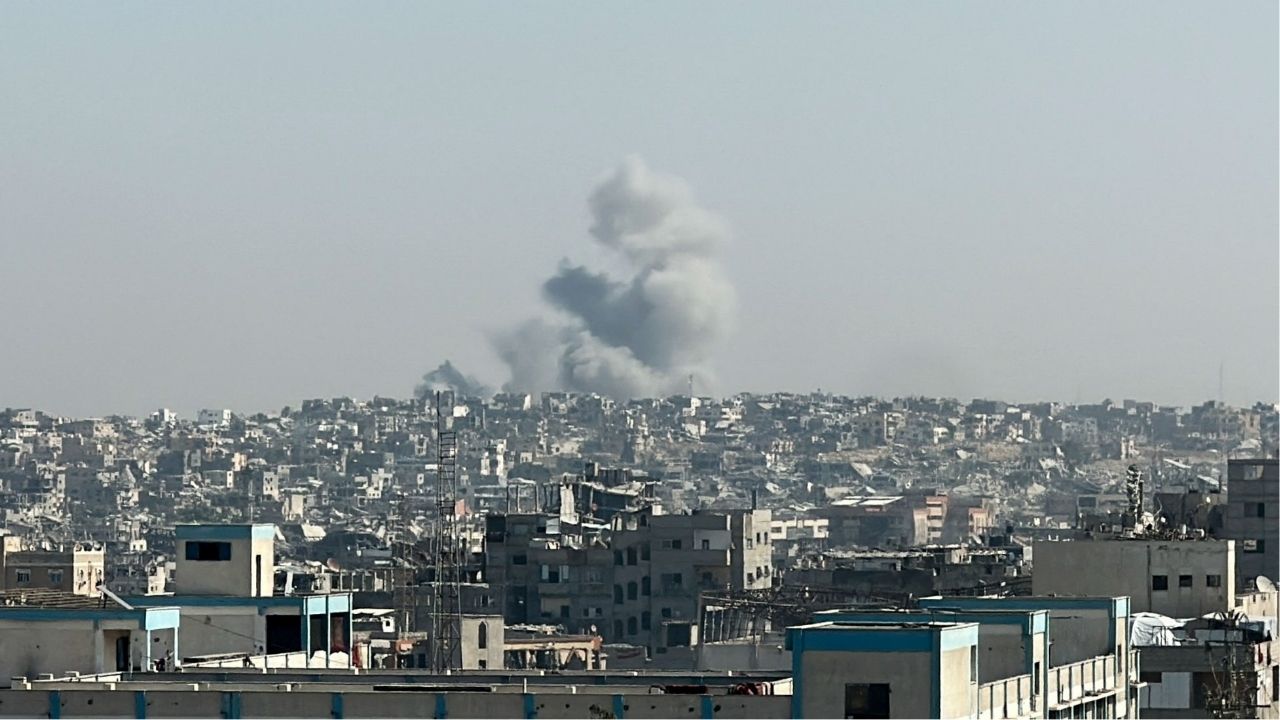Politics
U.S. Envoys Press for Gaza Ceasefire Amid Renewed Violence

U.S. envoys are intensifying diplomatic efforts to stabilize the Gaza ceasefire following a surge in violence that threatened the fragile peace established just a week ago. On March 15, 2024, Israeli Prime Minister Benjamin Netanyahu met with U.S. representatives, including Steve Witkoff and Jared Kushner, in a bid to restore momentum to the ceasefire plan championed by U.S. President Donald Trump.
The recent escalation was triggered by a Palestinian attack that resulted in the deaths of two Israeli soldiers, prompting a retaliatory bombardment from Israeli forces that left at least 28 people dead in Gaza. Both Israel and Hamas have since reaffirmed their commitment to the ceasefire, but the ongoing violence raises significant questions about the durability of the agreement.
High-Stakes Diplomacy
The U.S. delegation’s visit aims to reinforce the current ceasefire and initiate discussions on the more challenging phases of a proposed 20-step plan for peace. U.S. Vice President JD Vance is also scheduled to visit Israel, emphasizing the urgency of cementing the ceasefire in the region.
President Trump recently declared this moment a “historic dawn of a new Middle East,” highlighting the geopolitical significance of the ongoing talks. Meanwhile, reports indicate that three more individuals in Gaza lost their lives due to Israeli tank fire near the demarcated “yellow line,” a boundary established to regulate military operations.
Residents of Gaza City expressed confusion regarding the yellow line, which is visible on electronic maps but lacks physical markers. “The whole area is in ruins. We saw the maps, but we can’t tell where those lines are,” said Samir, a local resident. In response, Israel’s Defense Minister released footage displaying bulldozers placing yellow blocks to clarify the boundary.
Hostage Negotiations and Challenges Ahead
The discussions involving Witkoff and Kushner were planned prior to the recent flare-up. President Trump maintained that the ceasefire remains intact, suggesting that Hamas leadership may not be directly involved in the recent violations. He stated, “We think maybe the leadership isn’t involved in that,” while aboard Air Force One.
Israel is unlikely to announce any advancements in negotiations until more hostages are returned. Reports suggest that Hamas may be able to transfer up to six more bodies of hostages currently in Gaza. Israeli media further indicated that preparations are underway for the transfer of one body after Hamas confirmed it had located a hostage.
Meanwhile, Khalil Al-Hayya, Hamas’ exiled Gaza chief, is set to engage in talks in Cairo regarding the implementation of the ceasefire. A Palestinian official close to the discussions noted that the delegation aims to explore the formation of a technocratic body to govern Gaza, an idea that has faced resistance from Hamas and allied factions, which reject any foreign oversight.
Both sides have reiterated their commitment to the ceasefire despite the recent violence. An Israeli government spokesperson emphasized, “Israel will not accept any violations of the ceasefire in the Gaza Strip,” asserting that Hamas must be disarmed.
In contrast, Hamas claims that Israeli actions have caused significant civilian casualties and hindered essential supplies from reaching Gaza. Israeli Defense Minister Israel Katz warned that any Hamas militants remaining within areas under Israeli control would be targeted without notice.
As the ceasefire hangs in the balance, uncertainty looms over the region. One Gaza City businessman, displaced and anxious about the situation, remarked, “What happened yesterday made people go crazy to buy food, greedy merchants hiked the prices. The deal looks so fragile.”
The evolving situation underscores the complexity of achieving lasting peace in a region marked by decades of conflict. The outcome of these diplomatic efforts remains critical for both immediate humanitarian concerns and the broader geopolitical landscape.
-

 Lifestyle5 months ago
Lifestyle5 months agoLibraries Challenge Rising E-Book Costs Amid Growing Demand
-

 Sports4 months ago
Sports4 months agoTyreek Hill Responds to Tua Tagovailoa’s Comments on Team Dynamics
-

 Sports4 months ago
Sports4 months agoLiverpool Secures Agreement to Sign Young Striker Will Wright
-

 Lifestyle4 months ago
Lifestyle4 months agoSave Your Split Tomatoes: Expert Tips for Gardeners
-

 Lifestyle4 months ago
Lifestyle4 months agoPrincess Beatrice’s Daughter Athena Joins Siblings at London Parade
-

 Science4 months ago
Science4 months agoSan Francisco Hosts Unique Contest to Identify “Performative Males”
-

 World4 months ago
World4 months agoWinter Storms Lash New South Wales with Snow, Flood Risks
-

 Science5 months ago
Science5 months agoTrump Administration Moves to Repeal Key Climate Regulation
-

 Business5 months ago
Business5 months agoSoFi Technologies Shares Slip 2% Following Insider Stock Sale
-

 Science5 months ago
Science5 months agoNew Tool Reveals Link Between Horse Coat Condition and Parasites
-

 Sports4 months ago
Sports4 months agoElon Musk Sculpture Travels From Utah to Yosemite National Park
-

 Science5 months ago
Science5 months agoNew Study Confirms Humans Transported Stonehenge Bluestones









